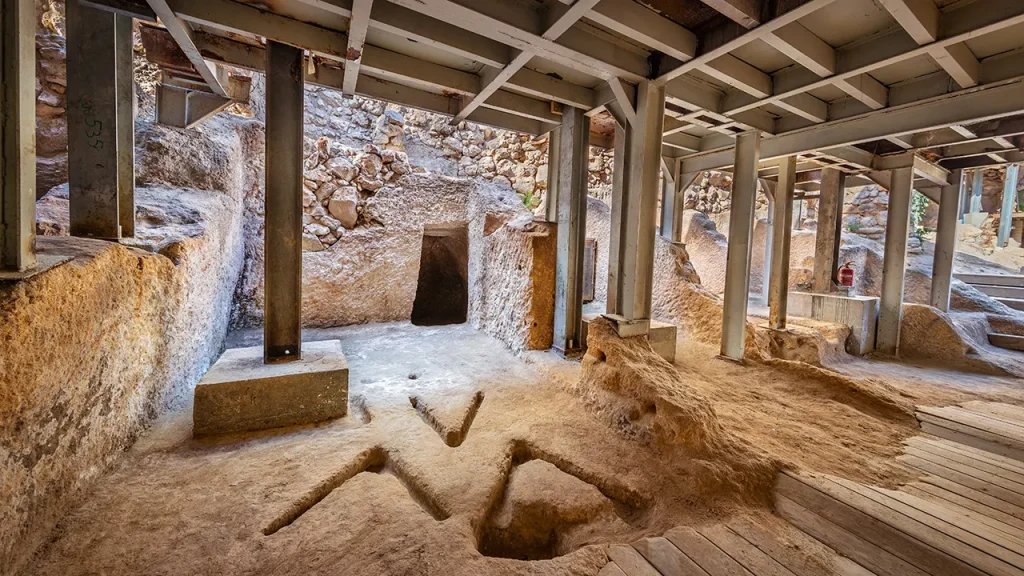The recent unearthing of an ancient structure within the Jerusalem Walls National Park, specifically on the eastern slope of the City of David, offers compelling evidence of ritual practices dating back to the First Temple period. This remarkable discovery, led by excavation director Eli Shukron, has unveiled a complex comprising eight rock-hewn rooms, each seemingly dedicated to specific functions. The presence of an altar, a standing stone, an oil press, and a wine press strongly suggests a cultic or religious purpose, a hypothesis further supported by the structure’s proximity to the Temple Mount, a mere few hundred meters away. This unique structure stands as the only known example of its kind from this period within Jerusalem, and one of only a handful discovered in all of Israel, emphasizing its historical significance.
The exceptional state of preservation of the structure allows for a deeper glimpse into its past. The standing stone remains upright in its original position, and the overall integrity of the rooms offers invaluable insights into their former use. One room housed an oil press, likely used for producing sacred oils, while another contained a wine press for crafting ritual wine. Further investigation revealed an altar characterized by a carved installation with a drainage channel, and a large standing stone, both indicative of ceremonial activities. A room with a floor bearing enigmatic V-shaped carvings presents a puzzle for researchers, with Shukron suggesting they may have served as a base for a tripod employed during rituals.
Beyond the main structure, a small adjacent cave yielded a cache of artifacts dating to the 8th century BCE, providing further context to the site’s timeline. This collection includes everyday items such as cooking pots, jars inscribed with fragments of ancient Hebrew script, loom weights, and grinding stones for processing grains. More intriguing are the presence of scarabs and stamped seals, hinting at possible connections to broader cultural influences. These artifacts, together with the structure itself, paint a vivid picture of life and religious practices during the First Temple period.
The cessation of activity at the structure around the 8th century BCE coincides with the reign of King Hezekiah, known for his religious reforms aimed at centralizing worship at the Temple in Jerusalem. Historical accounts record Hezekiah’s efforts to abolish ritual sites scattered throughout the kingdom, a move that aligns with the apparent abandonment of the newly discovered structure. This correlation between archaeological findings and historical records strengthens the argument for the structure’s ritualistic function and its eventual demise due to centralized religious authority.
The initial discovery of the northern part of the structure dates back to 1909, attributed to British explorer Montague Parker during his quest for the Ark of the Covenant and Temple treasures. However, it wasn’t until 2010 that Shukron initiated comprehensive excavations, spanning several seasons, which ultimately revealed the full extent and significance of the site. This rediscovery underscores the enduring nature of Jerusalem’s archaeological heritage, constantly revealing new layers of its complex and fascinating past.
The implications of this discovery resonate far beyond the realm of archaeology. Ze’ev Orenstein, the director of internal affairs at the City of David, emphasizes the profound connection between the Jewish people and Jerusalem, a bond spanning over 3,000 years and supported by both faith and archaeological evidence. Unlike many ancient sites relegated to museums and history books, Jerusalem’s Biblical heritage remains a living entity, inextricably linked to understanding the world’s past, present, and future. The unearthed structure serves as a tangible reminder of this connection, providing a window into the religious practices and daily lives of those who inhabited this sacred city millennia ago.

